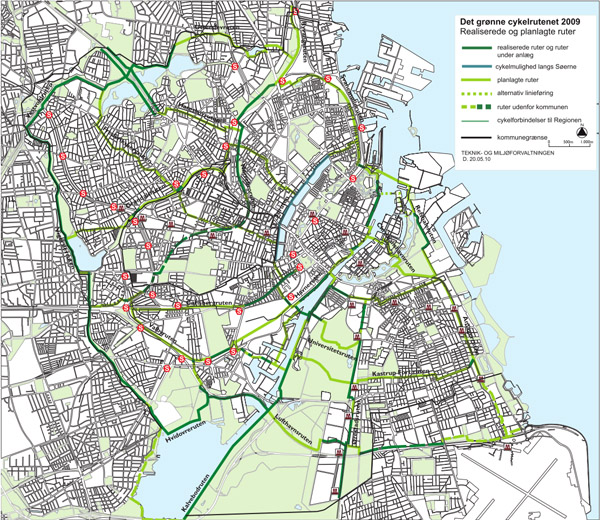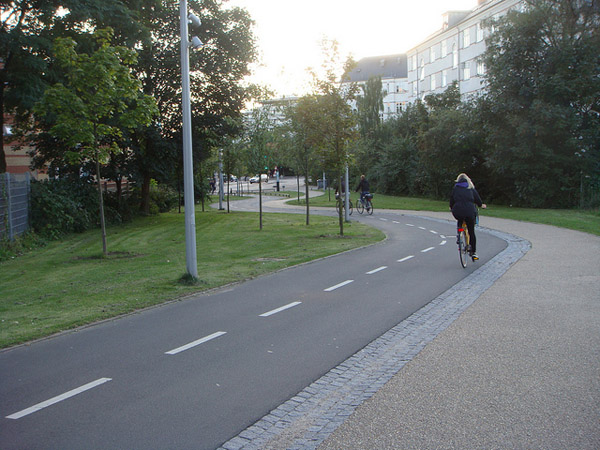View in gallery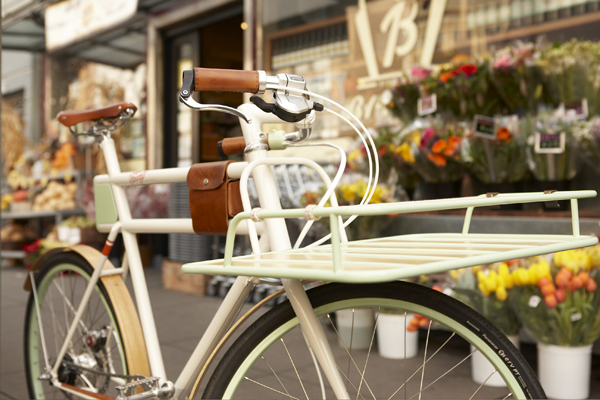
The bicycle was once the king of the road in the United States. It was the urban commuter’s chariot, a simple piece of technology that connected the home to the workplace, the market to the ice box. Yet its kingship was short-lived, as the rise of the automobile slowly pushed the cyclists to the sidewalks and the citizens to the suburbs. In a few short decades, the automobile had re-written the map in the United States, as long roads separated residences from retail, and highways connected cities to cities and states to states. This vehicular revolution was assumed to replace the bicycle, but the bicycle is still very much alive. It’s here, and in a matter of years it may once again become the chariot of choice for tomorrow’s commuter. Join us to explore why you might be peddling along soon– if you’re not already.
The commuter cyclist revolution has grown strongly over the last decade. The return to urban living amongst young professionals has driven a need for cheap, quick transit in the face of fare hikes and vehicular congestion. It shows in the numbers– in 2011 alone, 133 million bicycles sold to retail, a 500% rise over 50 years ago (and roughly double the amount of cars sold over the same period). Yet ridership is far from peaking in the United States, and this revolution still has a long way to go. That “long way” might be covered quickly, because a perfect storm is brewing to put a strong wind on the back of cycling advocates.
We see a return to cycling driven by five factors. From new technologies to rising fuel costs to government investments in urban infrastructure, these five factors could give the cycling revolution a much-needed pedal assist. As we explore these five factors, we do so with you as more than just a reader. For each, we’ll share a way for you to get involved, to help turn the wheels of this strong green movement.
Cycling Superhighways: Next Gen Green Infrastructure
View in gallery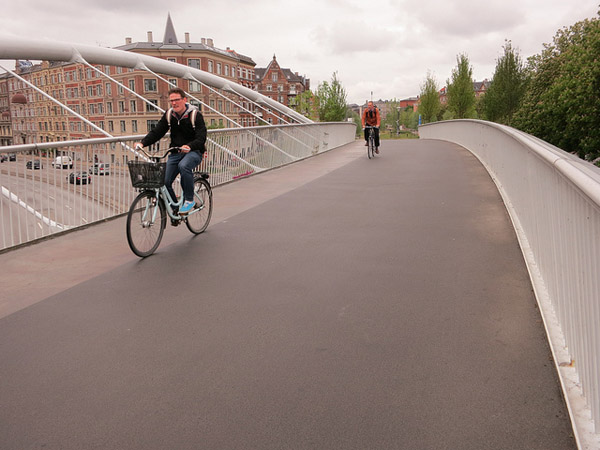
Over the last decade, progressive cities have worked to meet the rising demand of cyclist commuters by adding new bike lanes, bike-only roads and even expansive bike highways. It’s an easy decision for a modern mayor– for every cyclist or two you place in a bike lane, you take one car off of the street. While cities like London and Chicago have made impressive strides, few have gone as far as Copenhagen. Copenhagen is in the process of completing a cycling superhighway, a network of 26 bike routes that will connect Copenhagen with almost as many nearby suburbs. This will add tens of thousands of riders to a city where 33% of its current commuters are cyclists.
The cities of the United States have a long way to go before they catch Copenhagen, but some are working in this direction. Minneapolis recently completed what they consider to be the “America’s first bike freeway“, Atlanta is in the process of building a city-wide pedestrian transit system from an historic railway, and Portland boasts 79 miles of off-street bike paths. If you feel your city could do more to suit the cyclists of the future, get involved. A good place to start is this Guardian UK article by Matt Seaton, “How to become a Cycling Ambassador“.
Copenhagen’s Green Path Gallery
View in gallery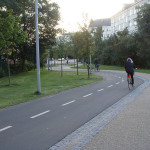 View in gallery
View in gallery View in gallery
View in gallery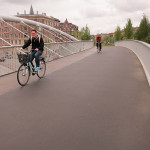
[image credits: planetgordon, kmardahl]
Electric Pedal Assist Technology – the New Hybrid
View in gallery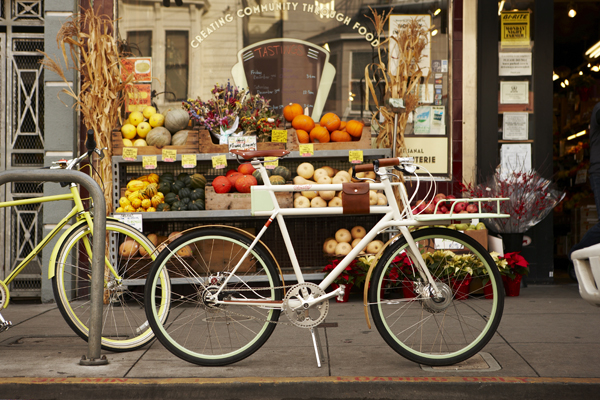
While local government infrastructure will pave a path for the cyclists of the future, new technologies will carry them across it. In recent years, the most noteworthy technological advancement is the electronic pedal assist. With an on-board battery and a hub-mounted motor, pedal assist systems provide a power boost to increase cruise speeds, to fight hills, to combat wind resistance and to shoulder the weight of added cargo. Cyclists still pedal normally, but the pedal assist smooths out the difficult stretches and adds a bit of speed. This doesn’t make your bike a scooter, as the workout, the individual freedom and access to pedestrian paths all remain.
A recent example is the lovely Faraday Porteur above. This bicycle features a small battery system within the frame, a hub-based motor, a set of lights in the front and back and controls in the handlebar. It is the result of research, development and hard work that recently culminated with a successful launch on Kickstarter. $177,000 (and counting) was contributed by the Kickstarter community to fund the first production run of the Faraday Porteur, a run that will itself fund the next run for this exciting bike company. Want to help the next great electric bike assist revolution yourself? Kickstarter is a great place to get involved, and new bike-related projects are quite frequent. If you can spare a dollar or two, you’re helping fund the next cycling revolution.
Faraday Porteur Electric Assist Bicycle
View in gallery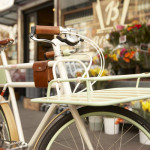 View in gallery
View in gallery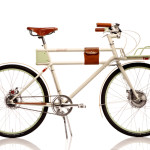 View in gallery
View in gallery
Bike Laws: Making the Streets Safer for Cyclists
View in gallery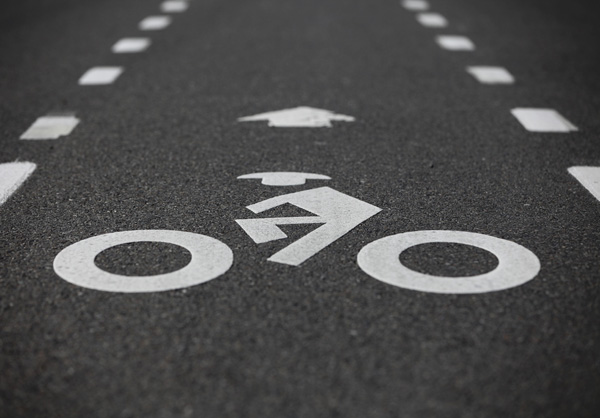
[image credit: clappstar]
One reason many commuters avoid biking to work is the perceived dangers of the practice. Depending on where you live, it can still be dangerous to ride the roads of your city especially if you’re not protected and careful. Fortunately, many cities are adding laws to the books which work to protect cyclists from others on the road. Recently, Philadelphia added a law that allows cars to cross the center line to avoid a cyclist, and it prevents cars from coming within four feet of a bike. In other areas, where traffic speeds are 25mph or lower, some cities provide cyclists with the full use of an entire lane. These laws and the infrastructure explored above are in place to protect cyclists and ensure that their ride to work and school is safe and enjoyable in both directions.
How can you help this cause? While getting involved with your local bicycle ambassador’s group is a great start, you can do a little work on your own. Invite a nearby co-worker or fellow student to ride along with you on a commute for a day or two. Beforehand, make sure they have a helmet handy, help them locate the proper bike paths along their route and plan to ride along with them for a few days. Joining the cycling commute can be difficult for a beginner, and a lot of the exercise isn’t self explanatory. If you walk through the process with them, you just might add another cyclist to the ranks. In turn, they may educate the next new cyclist in the same way you did for them.
Rising Fuel Costs: Driving Alternative Transportation
View in gallery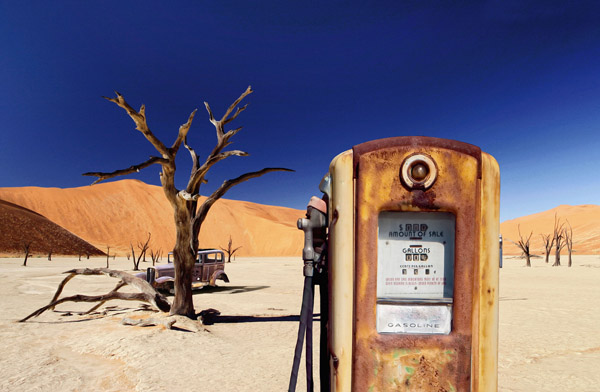
[image credit: mobilestreetlife]
The only thing as certain as death and taxes is the rising cost of gasoline. It’s inevitable, given that oil is a finite resource, that it’s price will rise as it approaches depletion. As the cost rises, commuters will find themselves increasingly in need of alternative transportation. Fortunately, when the fuel pump goes dry, the bicycle will still be cruising.
While we wouldn’t wish $7.00 per gallon gasoline on anyone, it’s wise to diversify our options for transportation. Given that the cheap, simple and strong solution of cycling has been around since before the automobile, it’s likely to be the easy option for commuters looking to leave the car behind. Cyclists can help by working with their local governments to plan for the demands of tomorrow’s commuters. While electric cars and light rail may carry much of tomorrow’s professional class, the bicycle may once again be its backbone.
Bicycle Sharing Programs: Bikes for All
View in gallery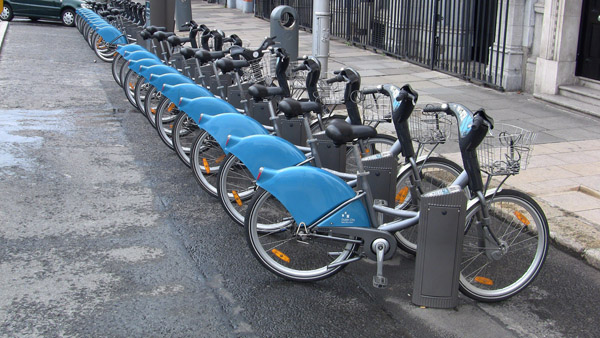
[image credit: infomatique]
Most major cities in the US currently offer or are building a bicycle sharing program. Riders pick up a bike in one location and drop it off at another, all based on small payments for individual use or longer subscriptions. The value to riders is simple– they don’t need to spend the money to buy a new bike, they never have to worry about maintenance and storage will never be an issue. Some of these bike sharing programs are ran by the municipality, others are funded by sponsors and few are separate, non-profit organizations. All of them share a mission– to provide a bicycle to those who want to ride and to provide many access locations around a healthy city.
If you want to get involved in this movement, two ways stand out. First, if your local bike sharing program is ran by the municipality or a non-profit, you can volunteer your time in maintenance or outreach. Second, you can use the service. While shared bikes may not have the personal style or functionality of your own bike, the occasional change is good for you. It’s enjoyable to try a different bike now and then and it changes the way you appreciate your own bike. What’s more, if new riders see you around the city riding a shared city bike, it shows people that their neighbors are doing it– so why can’t they?
– – – – – – – – – – –
Thanks for reading, fellow cyclist, new rider or long-term veteran. We’re excited for the bicycle to become a wider part of the urban American experience and all the great things that would bring to the health of our neighbors and our cities. We’d like to close with one interesting anecdote you might find surprising.
In 1880, a group of American bicyclists from various cities joined to form the Good Roads Movement. This group published a magazine of the same name and it led to a national voice amongst bicyclists that had one common goal– to improve the quality of roads in cities across America to benefit bicyclists, farmers and others. The group’s influence helped drive states like New Jersey to participate in road-building projects. After the advent of the automobile, this group’s message was co-opted and finally led to the Federal Aid Road Act of 1916, as signed by President Woodrow Wilson. Bicycle advocates explain that if it weren’t for the work of these early bicyclists, the early automobile would have faced an uphill battle to find paved roads to drive on. Thanks to these enterprising bicyclists, good roads were in place in some of America’s most progressive cities.


